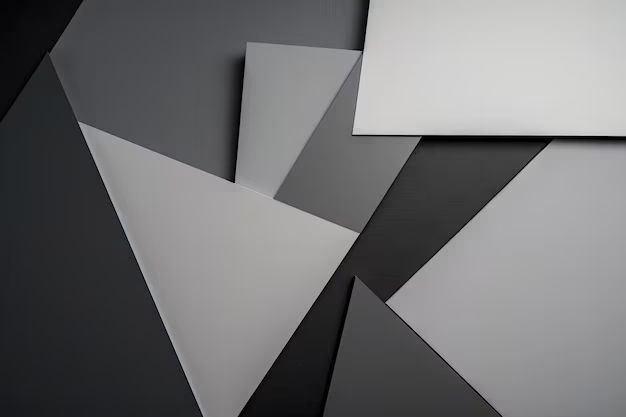Grey is an interesting color that lies between the extremes of black and white on the color spectrum. While black and white are seen as absolutes, grey contains many subtle variations and gradients between these two extremes. So how many different shades of grey actually exist between black and white? The answer may surprise you.
Defining Shades of Grey
To determine how many shades of grey there are, we first need to understand what defines a distinct shade. A shade is distinguished by its specific lightness or darkness value on a standardized color scale. The most common scale used today is the 8-bit grayscale, which contains 256 different shades from black (0 value) to white (255 value).
On an 8-bit scale, each shade has a lightness value incremented by 1. So the first shade above total black would be 1, the next 2, and so on up to 254 before reaching pure white at 255. This gives 256 evenly spaced shades of grey in total on an 8-bit scale.
Variable Color Scales
However, 8-bit is not the only scale used to define shades of grey. Some common scales include:
- 2-bit (4 shades of grey)
- 4-bit (16 shades)
- 8-bit (256 shades)
- 10-bit (1024 shades)
- 12-bit (4096 shades)
- 14-bit (16384 shades)
- 16-bit (65536 shades)
As you can see, the number of distinct shades available depends entirely on the bit-depth of the scale used. The human eye can typically distinguish up to 500 shades of grey without losing perceptibility between each incremental shade.
Shades of Grey in Printing
In the field of desktop publishing and printing, common greyscale standards include:
- 1-bit monochrome (black and white only)
- 8-bit greyscale (256 shades)
- 16-bit greyscale (65,536 shades)
Black and white printing cannot reproduce any shades of grey due to its binary nature. 8-bit greyscale allows for an excellent range of discernible shades, while 16-bit provides very fine gradual transitions between shades.
Shades of Grey in Photography
In digital photography, greyscales can range from 8-bit to 16-bit, with higher end cameras capturing 12-bit, 14-bit, or even 16-bit greyscale images. This allows photographs to contain 4,096 to 65,536 distinct shades from black to white.
Professional photo editing software like Photoshop is optimized to work with 16-bit greyscale images to preserve the full tonal range. This allows editors to perform adjustments like levels, curves, and dodging and burning while preserving smooth gradients.
The Bit Depth of Screens
| Screen Type | Typical Bit Depth |
| Standard definition | 8-bit |
| High definition | 10-bit |
| Apple retina display | 14-bit |
| HD XR OLED | 16-bit |
The number of shades of grey viewable on a screen depends on the bit-depth of the display. Standard definition screens can reproduce up to 256 shades natively, while high definition screens can show 1024 shades. High end Apple and OLED screens support up to 16-bit color for photography and video production.
The Most Common Greyscales
While a wide range of greyscales are possible theoretically, the most commonly used scales today are:
- 8-bit (256 shades) – common in computing, web, printing
- 10-bit (1024 shades) – common in HD video
- 12-bit (4096 shades) – common in digital photography
- 16-bit (65,536 shades) – high-end photography and production
The 8-bit (256 shade) greyscale provides enough discernibility for most applications like print, web, and standard display screens. 12-bit and 16-bit scales offer incredibly refined gradation for specialized fields like photography and cinematography.
Perceptual Limits of the Human Eye
While scales up to 16-bits provide extremely fine variation, research suggests the human eye can only perceive about 500 distinct shades of grey on average. Beyond this point, the increments between each shade become imperceptible to our eyes.
That said, subtle transitions between similar shades can still be distinguished when directly adjacent, even if the standalone shades are indistinguishable. So higher bit-depths still provide value by allowing ultra smooth gradients.
Practical Use Cases
The use of higher bit-depth greyscales beyond 8-bits provides the most value in fields where subtle tonal variations are important, like:
- Fine art photography
- Cinema post-production
- Scientific imaging
- Medical imagery
- Satellite mapping
Rendering thousands or even millions of shades can help represent smooth gradients in things like shadow, skin tone, topography, and other fine details.
Conclusions
In summary, there is no single answer for how many shades of grey exist between black and white. The number of distinct shades depends entirely on the bit-depth of the scale used to define and reproduce those shades.
Scales range from just 4 shades on 2-bit to over 65,000 shades on 16-bit. The most common scales are 8-bit, 10-bit, 12-bit, and 16-bit. While the human eye can only see about 500 shades, higher bit-depths allow for very smooth and subtle gradients.
So in practical terms, there are 256 commonly used shades, 1,024 HD shades, 4,096 photographic shades, and 65,536 production-level shades of gray Between black and white. But the true answer could be as high as the bit-depth of the chosen scale allows.


